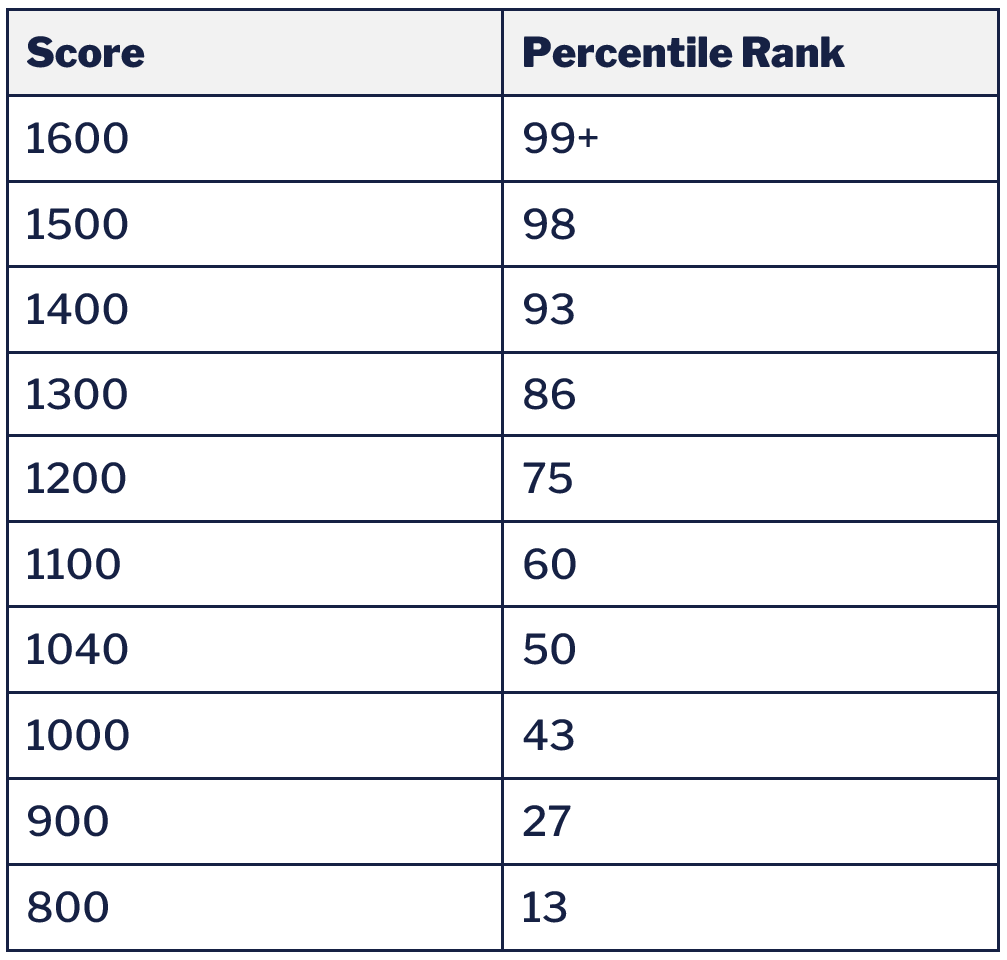What is a Good SAT Score?
The SAT is a standardized test widely used for college admissions in the United States. As a high school student, you might be wondering what constitutes a "good" SAT score and how it can impact your college applications. In this blog post, we'll explore what makes a good SAT score, discuss the SAT score range, provide a chart to help you understand the percentiles, and delve into how colleges publish their 25th to 75th percentile scores.
Understanding the SAT Score Range
Before we dive into what makes a good SAT score, it's essential to understand the score range for the SAT. The test consists of two main sections: Evidence-Based Reading and Writing (EBRW) and Math. Each section is scored on a scale of 200 to 800, making the total possible score range from 400 to 1600. The average SAT score is around 1050, with 533 for EBRW and 527 for Math.
What Makes a Good SAT Score?
A "good" SAT score is subjective and depends on your individual goals and the colleges you're interested in attending. Generally, a good SAT score is one that makes you competitive for the schools you're applying to and increases your chances of being admitted. To help you understand what a good SAT score looks like, we've provided a chart that breaks down SAT scores by percentile:
As you can see from the chart, a score of 1040 places you right at the 50th percentile, meaning you scored higher than 50% of test-takers. As your score increases, your percentile ranking improves, indicating that you've outperformed more of your peers.
25th to 75th Percentile Scores: What Do They Mean?
Many colleges publish the 25th and 75th percentile scores of their admitted students. The 25th percentile score means that 25% of the admitted students scored at or below that number, while the 75th percentile score means that 75% of the admitted students scored at or below that number. In other words, the range between the 25th and 75th percentile scores represents the middle 50% of admitted students' SAT scores.
This range can be useful for prospective applicants to gauge their competitiveness at a particular school. If your SAT score falls within or above the 25th to 75th percentile range for a college, you have a better chance of being admitted. However, keep in mind that a score below the 25th percentile doesn't automatically disqualify you, as colleges consider many factors during the admissions process, such as your GPA, extracurricular activities, and personal essays.
Determining Your Target SAT Score
When deciding on a target SAT score, consider the schools you're interested in and research their average admitted student SAT scores and 25th to 75th percentile score ranges. You can often find this information on the college's admissions website or through other resources like the College Board's BigFuture tool.
Aim for a score that is at or above the average for the schools you're applying to, or within the middle 50% range, as this will make you a competitive candidate. Keep in mind that a higher SAT score can also increase your chances of receiving scholarships and other financial aid.
Final Thoughts
Ultimately, a good SAT score is one that helps you achieve your college admissions goals. It's essential to set realistic targets based on your abilities and the schools you're interested in attending. Remember, your SAT score is just one part of your college application, and other factors like your GPA, extracurricular activities, and personal essays also play a significant role in your overall competitiveness.
As you prepare for the SAT, focus on building a strong foundation in the test content, practicing regularly, and honing your test-taking strategies. By setting a target score and working diligently towards that goal, you'll be well on your way to achieving success in the college admissions process. Good luck!


